Acura Cold Weather Testing - Click above for high-res image gallery
"Don't hold back."
Three words I've never heard before at a press event and three words that are running through my mind as I tramp down on the throttle and wheelspin my way towards the gray horizon.
Don't hold back.
Ahead of me lies a three-quarter-mile stretch of perfectly groomed snow sitting atop a thick layer of ice, with over 300 feet of desolation on either side.
Don't hold back.
From a standing start, the well-worn BMW X6 grapples with a lack of traction and then finally grips through the slush to propel me past 20... 30... 40... 50 mph. Then I slam on the stoppers. The ABS system pulses through the brake pedal and the coupe-shaped 'ute grinds to a squeaky, squawky halt. Let's try that again.
Don't hold back.
This time I get up to 60 mph, lay on the brakes and it's the same result. Now I'm bored, so it's time to experiment with a few emergency lane change maneuvers. I get up to 30 mph, stab at the brake, yank the wheel to the right, then back to the left and straighten up. Nothing. No drama. No hesitation. No tail wagging. I do it again, this time at 40 mph with the traction control off. Same result. Then 50 mph. Same result. Then 60 mph. And then I promptly stuff myself into an six-foot-tall snow bank.
Didn't hold back.
Follow the jump to read about our experience at Acura's cold weather testing facility in Minnesota.
The Playground
Just on the other side of the Canadian border lies Baudette, Minnesota, population 1,084. If the combination of ice fishing, heavy drinking and frozen extremities isn't your thing, the whole region is of little interest. But just outside the town proper lies one of the most advanced cold-weather testing facilities on the planet. It's also a hoon's heaven.
Automotive Enviro Testing (AET) is the creation of Larry Larson, an alfalfa farmer by trade and man made up of the most hardened Minnesotan stock. Back in 1993, Larson purchased the 780-acre swath of frozen desolation from the Feds once the U.S. Air Force's radar base was decommissioned after a 40-year run keeping tabs on the Ruskies. The massive radar stand remains, but the rest of the facility is a modern engineering masterpiece.
Originally, Larson set up a testing course on one of the adjacent frozen lakes, and when that location proved popular, he decided to expand the facility with a sizable amount of guidance from Honda.
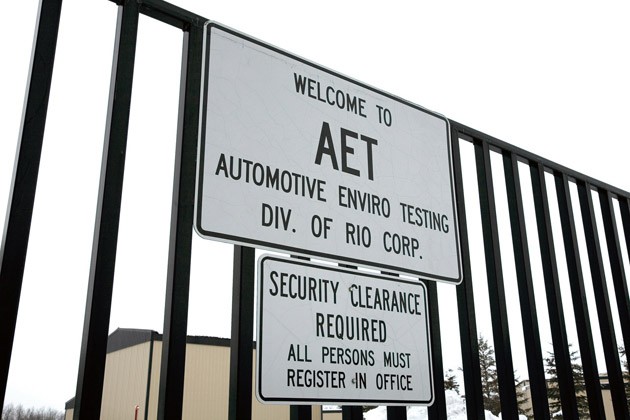
The result is one of the most awe-inspiring automotive playgrounds in the world, with the crown jewel – a 1.8-mile snow-packed oval surrounding a Vehicle Dynamics Area (VDA) stretching 3,650 feet long and 650 feet wide – at its heart. Peppered through the facility are three autocross tracks, along with a slush pool, a nine-lane hill with varying angles and textures, split and alternating mu (one side snow, the other side ice) ovals and a 1.15-mile off-road course with every imaginable hill, mound and snowy obstacle your imagination can muster. Yes, this is your dream backyard. And yes, it gets better.
The breadth and scope of AET is beyond impressive, but it's the little things that boggle the mind. Here's just a taste of the ludicrous attention to detail: The VDA, where I experienced my impromptu snow mound mounting, is "Zero-Flat," meaning it's a perfect plane from one end to the other. Simple enough, no? No. Baudette only gets around one meter of snow each year, so in order to create that flat, frozen expanse, Larson and his team begin pumping 10 million gallons of water into the field in November, and to reach the desired depth – four inches – the process takes nearly a month. Once it's frozen solid (temperatures of 30 to -40 degrees fahrenheit ensure that it stays solid over the 16-week testing season), Larson's alfalfa farming know-how comes into play.
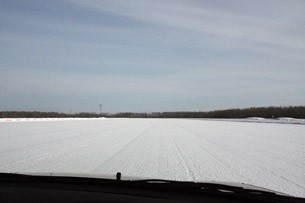
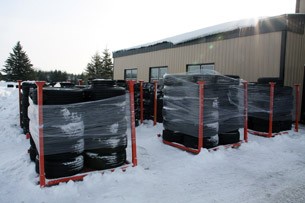
AET has taken old-school work-horses (tractors) and fitted them with new-school tech (GPS). Combined with custom-made plowers that do everything from creating ice (imagine 20 flamethrowers mounted to the rear of a plow) to scraping up snow (same plow, but with a few dozen razor-sharp circular blades), Larson and Co. can create whatever environment Acura's boffins are after. And deliver something that's invaluable to engineers: Consistency.
The Crew
The man that issued (maybe regrettably) the "don't hold back" edict is Ted Klaus, one of Honda's chief engineers and one member of the team that spends five to six weeks at the facility each year. Along with Principle Engineers Jeff Ertz, Jason Widmer and Mike Unger, they constitute a relative rarity in the automotive world – they're both engineers and test drivers – a distinction that was hammered home countless times during my stay.
The Gauntlet
The day began in a -40 degree "cold cell" that the engineers use to test everything from the door seals to the defrosters. Mercifully, they kept it to a balmy -20 degrees during our time inside, but I'm convinced I left part of a toe on the floor when entering the MDX (Note: thin-soled driving mocs are not suitable winter attire).
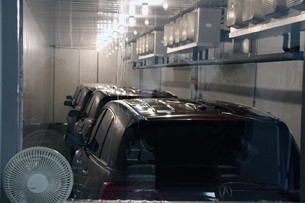
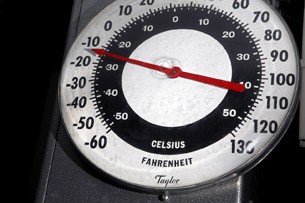
Within about 10 seconds of turning over (and it started instantly, dontchaknow), the windows began to defrost and defog, and Acura's attention to detail literally shown through. Not only was the windshield nearly completely clear in a matter of minutes, but the front edge of the side windows – exactly where you'd look to see the wing mirrors – was frost-free. Impressive.
Next up was the slush pit, an 18-inch deep trough filled with near frozen water and chunks of hardened snow. The test involves driving through the pit at a normal speed and then running around the course, throwing ice, snow and assorted frozen detritus onto the undercarriage. The result is 800 pounds of ice stuck to the bottom of the MDX and ZDX to see if the brakes, suspension, wheels and other underbody bits cope with the added weight and limited movement. A quick glimpse under a pre-treated TL shows the after effects. See that chunk of ice extending into the wheel? That's the control arm. And for the record, they were able to drive the sedan onto a rack with over an inch of ice cracking off the wheels from the friction of the calipers.
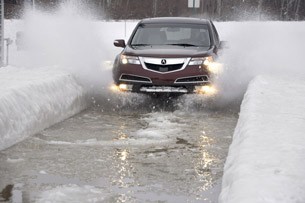
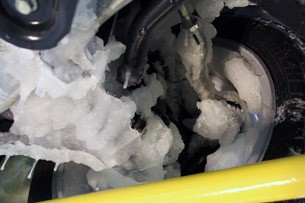
The Kit and the Contenders
If you're getting the idea that all these exercises are obscenely extreme, you're right. But when you're engineering a vehicle to tackle a variety of climates and last into the next decade, it's a necessity. But what about the competition?
The first exercise of the afternoon involved three paved hills with a sheet of ice set down the middle. Strapped into the Audi Q7, it made quick work of the 20 percent grade, even when we stopped midway up and gave it the boot. Both the MDX and Lexus RX350 on hand (all the vehicles were wearing all-season rubber, with the exception of the TL and 335xi) tackled the icy grade without much problem, either. Then came time to run up the 30% grade. As expected, the MDX – with its torque-vectoring all-wheel drive – was able to stop at the midway point and then scurry its way to the top in undramatic fashion. The RX and Q7? Not so much. Both were an angry wheel-spinning, frantic counter-steering mess, and on at least one occasion we had to slide backwards to make another go of it.
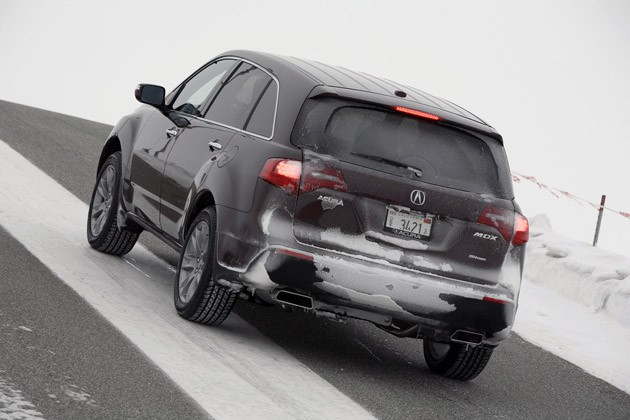
On the mile-plus off-road course, it was a similar situation.
While the Audi's Quattro system was able to manage most of the climbs, hills and bumps with relative ease, it's excessive weight and obtrusive traction control meant that first, second and sometimes third attempts were necessary to scale the obstacles ahead. And the RX was a bit of a disaster.
The comparatively low-tech AWD system that Lexus employs on its best-selling CUV is more comfortable traipsing through dirt-strewn wineries than Minnesotan winters. This was made all the more apparent when we clambered up one side of a snowy mound only to get stuck in the valley leading up to the next five-foot-tall frozen heap. With the traction control enabled, any hint of spin automatically shuts off power to the offending wheel. When we finally disabled the system (which took nearly five minutes and we're still unsure how we did it), we ground our way down to terra firma before one of the AET pickups arrived to our rescue (a Ram, natch).
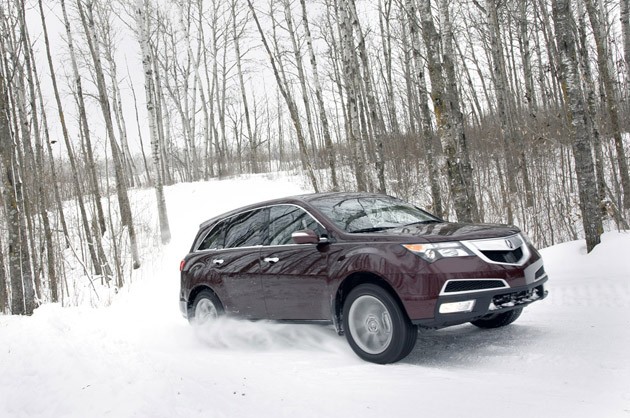
The Tech
Obviously, the point of this frozen expedition wasn't just to show off the rigors of Honda's winter testing regimen; Acura wants to highlight its wonderfully Japanese-named Super Handling All-Wheel Drive (SH-AWD).
Just as a brief primer, SH-AWD is one of the first mass-marketed torque-vectoring all-wheel drive systems, which allows power to be delivered in precise measurements to individual wheels. Unlike traditional transfer cases or full-time four-wheel drive systems, SH-AWD takes in yaw rate, steering angle, throttle input, brake pressure, longitudinal Gs and a host of other information from a variety of sensors and then distributes power exactly where it's needed.
Here's a simple example: Let's say your trundling along on the highway in a TL. In a high-speed, steady-state cruising situation, around 90 percent of the power is being sent to the front wheels (where traction is the best) and the other 10 percent is being dolled out to the rears. Now a deer jumps out of a thicket. You instinctively brake, turn the wheel to the right and accelerate around Bambi. During that split-second maneuver, the sensors send a Cray's worth of information to the SH-AWD system, resulting in the right rear wheel getting more torque than the left and the left front wheel getting more twist than its counterpart on the right. Balanced. Neutral. Controlled.
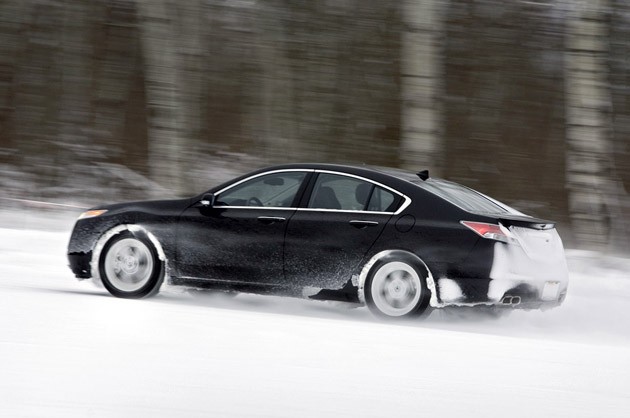
In that high-speed scenario, the power transition is smoother and slower, so it doesn't upset the vehicle's footing and result in a spin. Conversely, at a slower speed, the torque transfer can be more liberal and quicker as you're further away from the limits of adhesion and balance is less of an issue. Since it's introduction on the 2005 RL, SH-AWD has proliferated throughout Acura's lineup to include the MDX, RDX and TL. And Acura must be doing something right, because the new "it" feature of the decade is "e-diffs" – a similar take on SH-AWD, although usually reserved for the rear wheels.
The Tune
To illustrate the customization of SH-AWD, Acura hacked up an MDX with a laptop, some cables and a black box with a small knob controlling torque output front-to-rear. Once situated in the crossover, we headed out onto one of the snowy autocross tracks to tune our own driving experience and in the process discovered that the MDX gets the award for Most Unlikely Drift Machine.
With 100 percent of the torque dialed back to the rear wheels, crossed-up sideways fun was a flick and a punch away. Although overall throttle control left a bit to be desired, after tweaking the settings, a 30:70 power split seemed to be the perfect recipe for tail-out heroics... in a CUV.
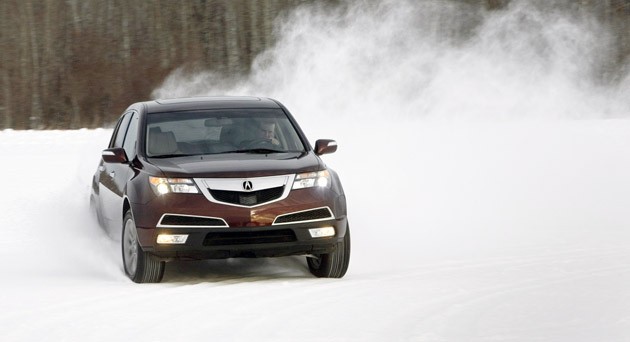
And the surprises didn't stop there.
The laptop allowed our hapless passenger to dial in different degrees of steering angle to trick the system into thinking we were cranking the wheel at double the actual rate. As expected, the new setting took a mental rejiggering while sliding from bend to bend, but the real effect could be felt out back, with a perceivable shift in power to the inside rear wheel on corner exit. Essentially, it magnified torque output and – depending on the bend – had us shooting through corners quicker and with more control. The net effect of all this tuning time was obvious when we took an unmolested MDX out on the same course to see how the system adapted to whatever I could muster. It was a seamless, uninterrupted flow of perfectly predictable power and surprisingly communicative steering. I walked away in awe, convinced that if you're in the hunt for an upmarket CUV and you're living in one of the nation's colder climes, the MDX is the ticket. Bar none.
The Chassis Challenge
But no matter how fancy the all-wheel-drive system, no matter how many chips and sensors are on board, it's the chassis underneath that's the fundamental ingredient. On several occasions, each member of the team detailed how chassis development came first – everything else is secondary – and that, to quote the esteemed Mr. Klaus, "The driver is the most intelligent part of the vehicle." That focus on melding the mind with the underpinnings was abundantly clear with the MDX – and by extension, the ZDX – which took all comers. But with the TL, it was a slightly different story.
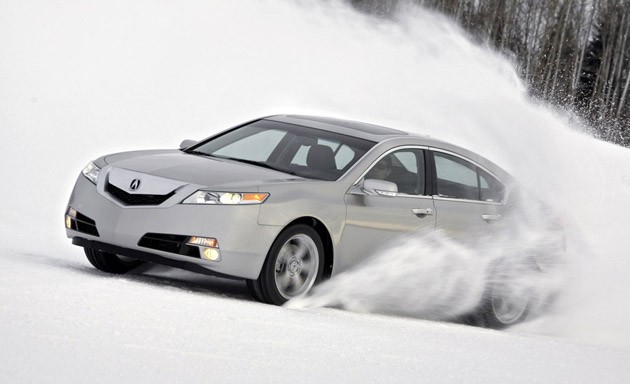
As our man Sam attested to in his recent review, the six-speed manual-equipped TL is a new high-watermark for Acura. In conjunction with Acura's high-tech all-wheel drive system, the TL is one of the first credible sports sedans to come from the brand in recent memory.
On the snow, it's a similar situation, but there's a rub.
Acura lined up a manual TL next to a (regrettably) auto 'box-equipped BMW 335xi to show off the TL's superior AWD, and – more importantly – its brilliant traction control system (VSA in Acura parlance). Winding my way through the course in the 335xi with the TC enabled was an exercise in frustrating futility. Any hint of slip resulted in an instant loss of power and the occasional explicative. As my speed increased, the party stopped even quicker. After an exasperated two laps, I held down the orange DTC button and the 335xi was transformed. Tail out, opposite lock antics were mine for the taking as the back end pirouetted out of line and the steering cried out direction like a Finnish co-driver. What started with disappointment evolved into a chuckle, then a laugh, then a hellacious cackle as I slid from bend to bend, reveling in my newfound Makineness. By the time I pulled in to swap vehicles, my lips were cracked – not from the cold, but from the ear-to-ear grin I maintained for a half-dozen laps.
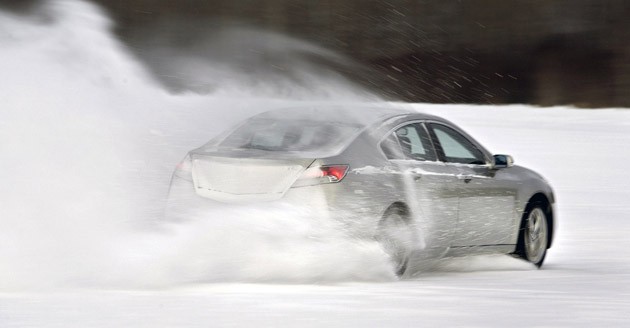
Back in the TL, things felt a bit bloated. While the Acura comes in only 75 pounds heavier than the Bimmer and shares a similar wheelbase (109.3 for the TL versus 108.7 for the 335), the only discernible difference is length: the TL stretches an extra seven inches over the 3 Series. But length wasn't the issue.
On my first two and half laps around with the VSA on, the Acura's superlative torque shuffling was a revelation and in stark contrast to BMW's slip and stop setup. Although there was a barely perceptible loss in power when caning it around the course, the adaptive nature of the SH-AWD made navigating the frozen track a point-and-squirt affair. Simply line up for the corner, lift off the throttle, dab the brake and just past the apex start feeding in the power. Just like the MDX, the experience was so engaging and reassuring that even a snow-averse California boy (me) could handle the task with aplomb. With the VDC off, I spun. Twice.
Despite my best attempts to anticipate the back end coming around or the front end losing grip, when in maximum attack mode, the combination of desensitized steering and a noticeable lack of seat-of-the-pants feedback meant I was crossed-up more often than not. It was far from fun, but with the VDC back on, the safe, controllable nature was restored and the pace quickened two-fold. Naturally, most drivers aren't going to disable the traction control when the white stuff is four inches deep, but the experience was telling; the winner unclear.
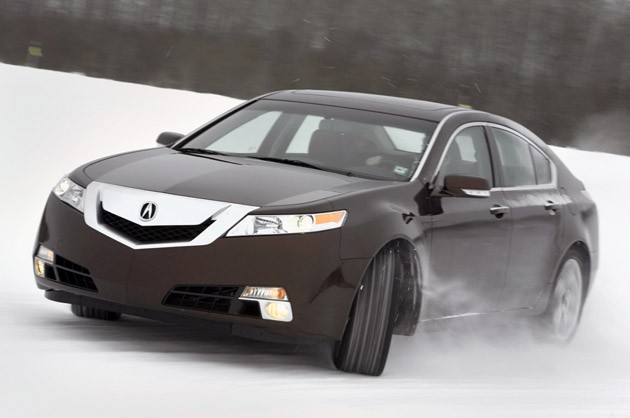
The Ultimate Winter Wonderland
Our final stop for the day was the aforementioned VDA, that massive swath of perfectly flat ice coated in a few inches of finely manicured snow. According to Larson, at 20 degrees it was too hot, so we weren't getting the full slip-and-slide experience. But no matter, with a ZDX, an X6 and an Infiniti FX35 on hand, it shouldn't be difficult to enjoy myself.
The purpose of the VDA is to perform simple, everyday maneuvers that the average driver contends with and assess how the powertrain reacts. Think left and right turns from a stop, foot-down throttle launches and emergency braking maneuvers. Ten minutes of that and we got the idea. Now it's time to see who can maintain the longest prolonged snow spray.
In a (nearly) consequence-free environment, the amount of information traveling up your posterior and through your arms is almost overwhelming. Steady-state circles evolve into massive, snow-spewing powerslides as you gradually up the power, sense the slightest loss of traction and keep your foot planted to the floorboard. What were subtle, transient body motions when gradually drawing Ss in the snow at speed become noticeable – sometimes startling – pauses in directional change, things that Acura's engineers have managed to all but remove from the ZDX, yet are barely perceivable on the X6 and glaring obvious on the Infiniti.
And the drifting, oh yes, the drifting. If powersliding a Lamborghini across a hastily patched airfield is the culmination of a childhood fantasy, then managing to maintain a ten-foot-tall wall of snow behind a luxury crossover is the arctic equivalent. It's the gearhead's ultimate winter wonderland, a spectacular, revealing, magical slice of North America inhabited by the people we respect most in the auto industry – geeks who can drive. They never hold back and it shows. The least I could do is return the favor.
Travel and lodging for this event were paid for by the manufacturer, as were the donuts.
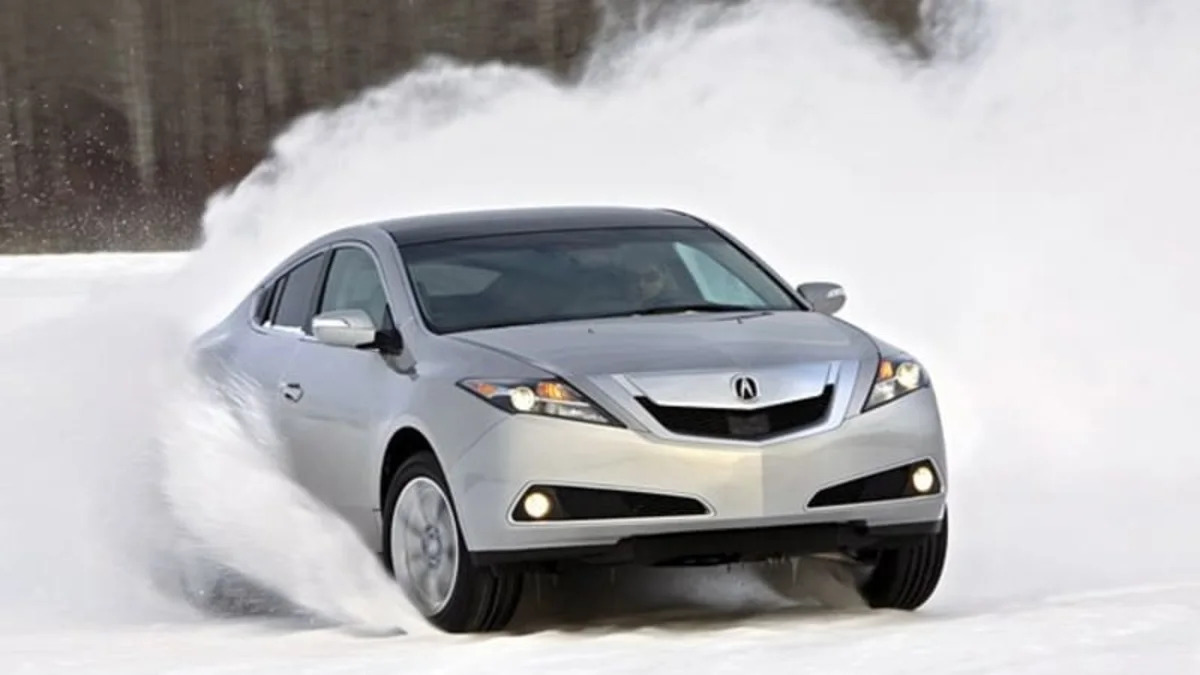
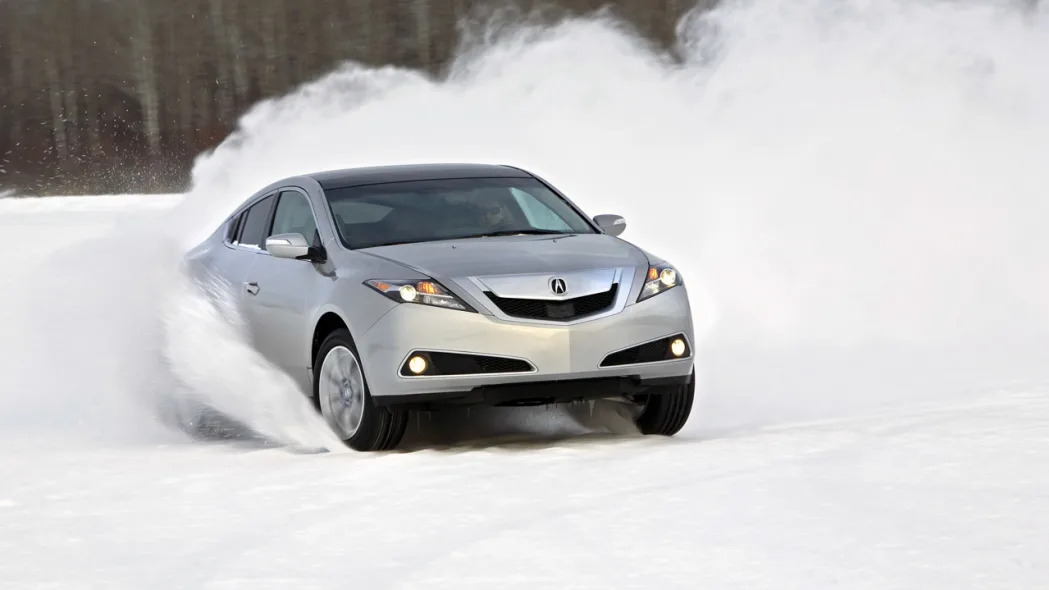

Sign in to post
Please sign in to leave a comment.
Continue